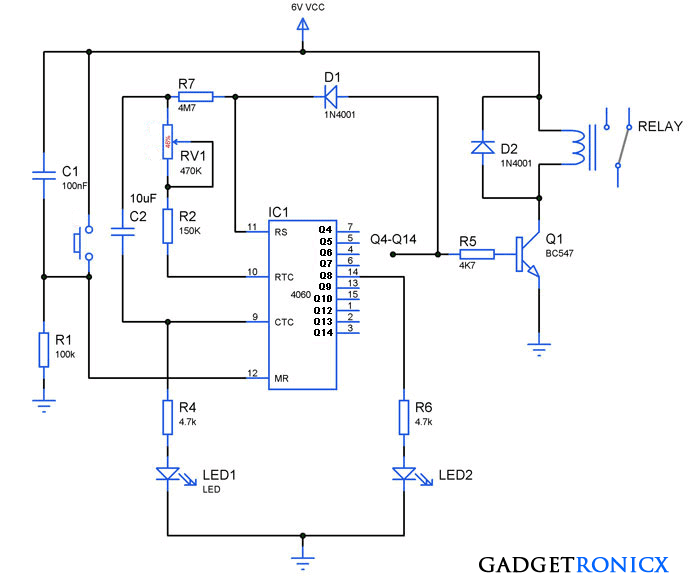 |
| 24 hour timer Circuit design |
IC 4060:
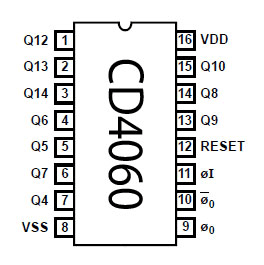 |
| PIn diagram of IC CD4060 |
IC 4060 is a formidable integrated circuit especially used for timing and oscillation purpose. It consists of ten active high outputs that can produce desired time delay from few seconds to hours. IC 4060 is a oscillator binary counter cum frequency divider. This Integrated circuit also has a inbuilt oscillator which is purely based on three inverters. The frequency of the internal oscillator is determined by the value of resistors and capacitors connected with it.
WORKING OF 24 HOURS TIMER CIRCUIT:
This timer works by means of inbuilt oscillator which was wired to produce a signal of specific frequency. When the oscillator is running the counter counts the number of oscillations and it is reflected in the output pins of the Integrated circuit 4060.
RV1 a variable pot was used to alter the frequency of the oscillator, so we can control the speed of count. To be exact by controlling the speed count we can decide the time duration it will take for any given output pin to go high. And from that output pin you can switch your transistor to turn on the relay or activate any device using it.
 |
| Range Table Setup Table |
The above table illustrates the time delay output obtained from each of the pins in the IC 4060. Using this table and performing simple math can help you obtain any time delay of your desire. For example if you want a delay of period 9 hours , the range table shows that it can be obtained from pin 2 of the IC.
The pin 2 need to go high after 9 x 60 x60 = 32400 seconds and setup table tells you to divide this 512. This will give 63 seconds, all you need to do now is to adjust RV1 in such a way the LED1 lights 63 seconds after power is applied. This will give an output at pin 2 after about 9 hours, your desired time delay.
The diode D2 was used above to disable the oscillator once the output becomes high. Omit the Diode D2 to use this timer circuit in the repeating mode. Leaving the D2 will carry on the count indefinitely and the transistor will turn on and off at the same regular time intervals. Implement it in a PCB after proper designing and relay should be handled with care.
ATTRIBUTION: Zen22142
NOTE:
- This IC 4060 is vulnerable to drift and can be improved by adding crystal or ceramic resonator to it. But still the accuracy obtained from it will be very low when dealing with long time periods.
- So use this timer circuit with caution, it can be a great hobby DIY piece. Just don’t rely on this for your office or school 😛

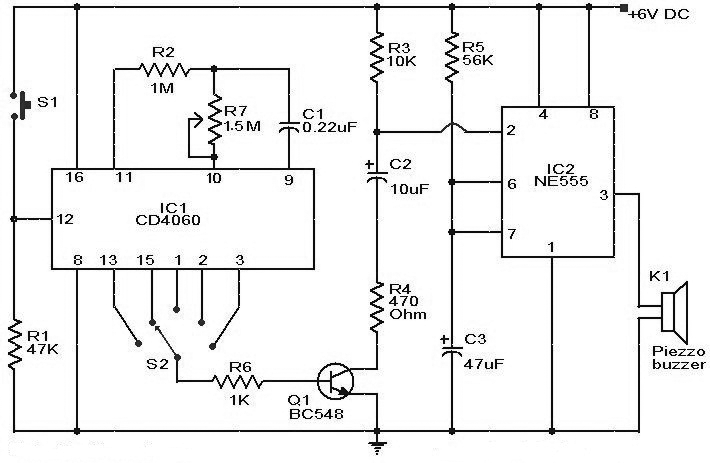
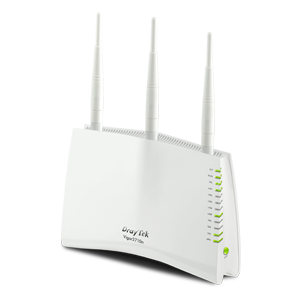
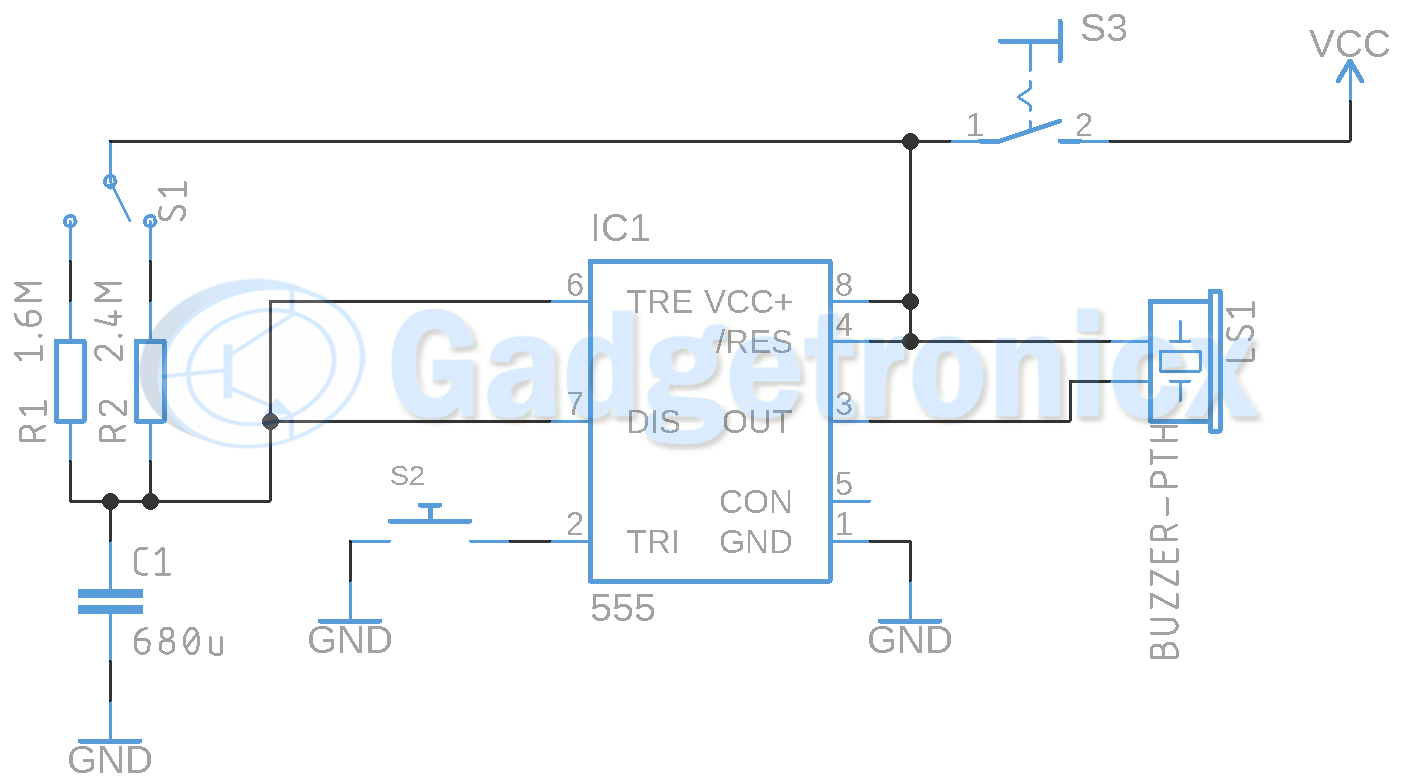
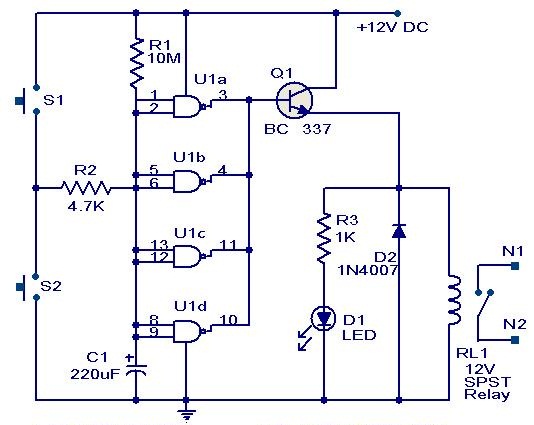
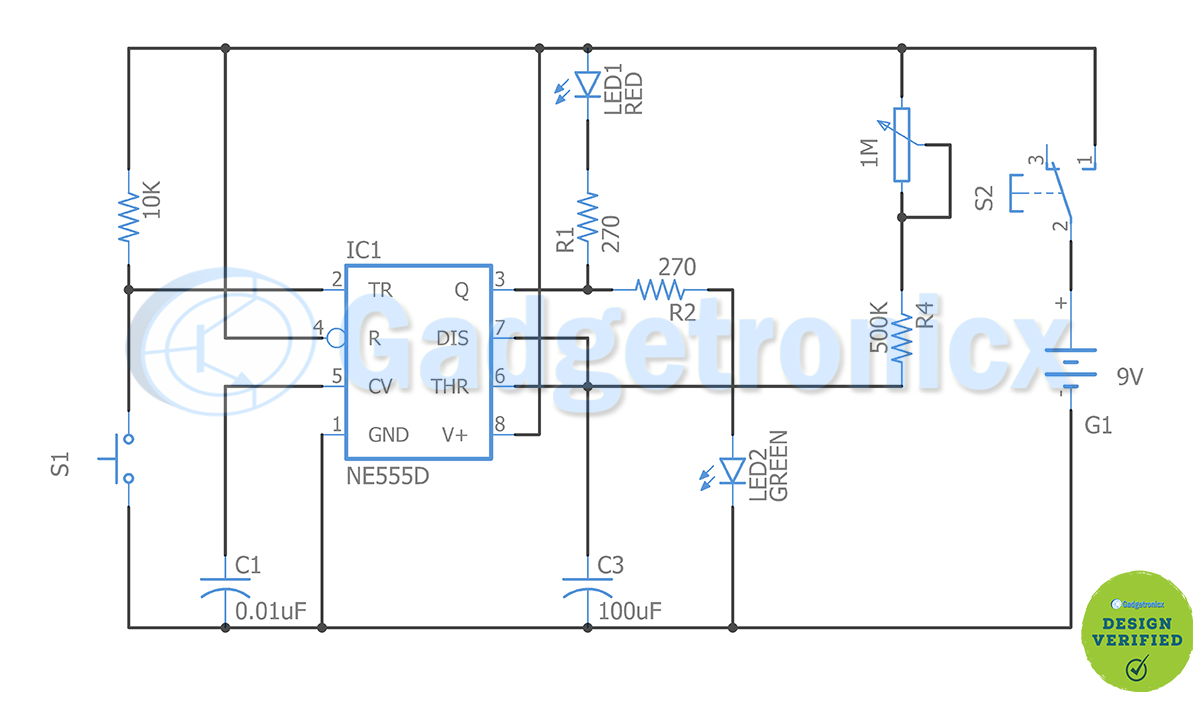

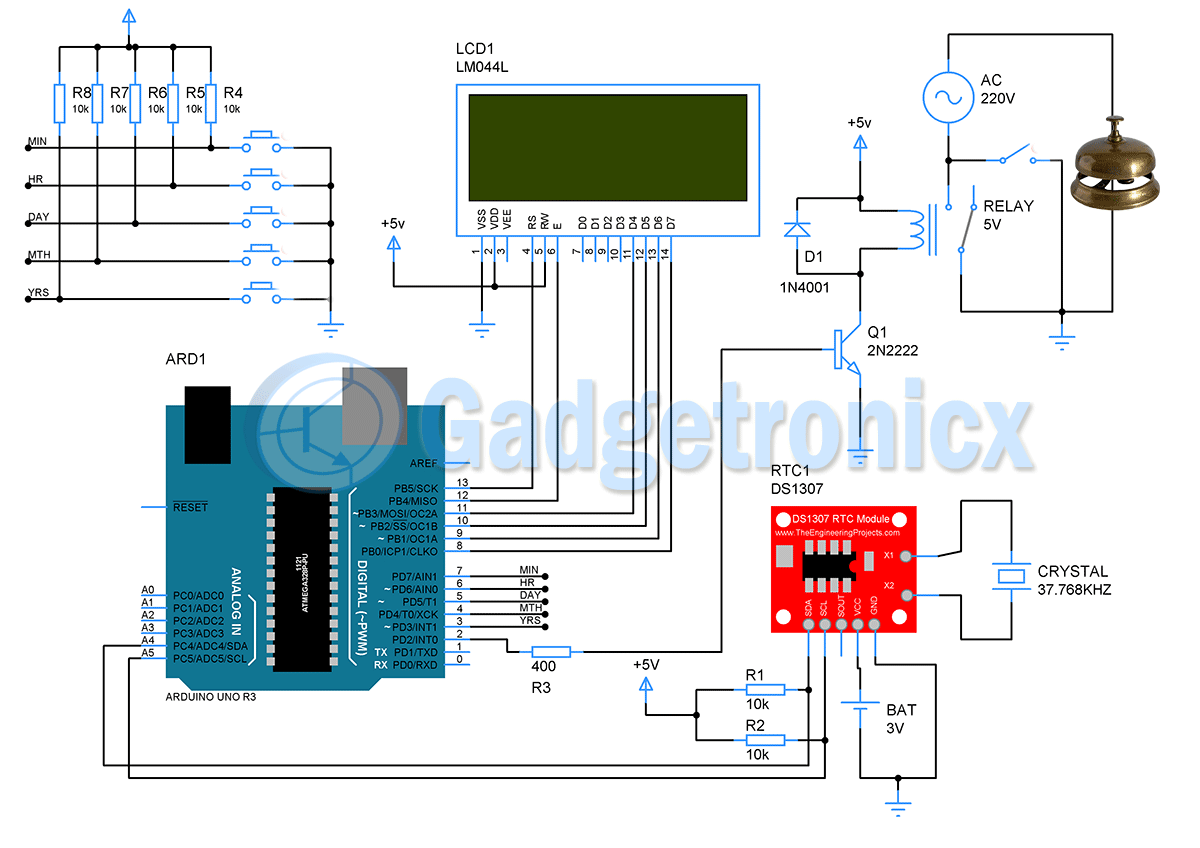
Hello, I’ve just made the timer to control circulations pomp in the hot water circuit to save electric energy. When I measured the times I have wondered, that the times “on” and “off” was not equal.
The time “on” was two times longer than the time “off”. How to change this into the equal times or the time “off” was longer than the time “on”?
hi, I’v build this counter to swich on/off circulating pomp for hot water via Relay. After measuring the time,the cycle “on” is 2 times longer then the cycle “off” – for example “on” – 180 sec, “off” – only 90 sec. I would like to change this work into “on” – 90 sec., “off” – 180 sec. How can I do this change.
for repeated application, I think D1 should be removed. In the test it says that D2 should be omitted. But D2 works as free wheeling diode.
I appreciate your work. Thank you
Good video: just the right amount of information to cover some basics that experienced users take for granted (or have simply forgotten why they’re used).
No unnecessary gibberish or long periods of time of background audio, nor any supercilious video enhancement.
::
An excellent representation of how an introductory course should be.
::
This video is a great course outline.
I’d like to see further videos which take each of these aspects/components as the main feature, and build up from that.
::
When my son asks me I need to include a particular component, this is exactly how I try to answer; concise and informative, without going beyond more than the original question requires.
Thank you
Hello, I want to know if the circuit can works with 12 V at Vcc instead of 6 V, and if I have to change something to do it.
Yes you can operate it using 12V. You need to alter the transistor bias resistor and use 12V relay instead of 6V.
I have other question. Is R6 always connected to pin 14? and Has R5 to be connected to one of the Q4-Q14 during the LED’s test?
DemalCal,
Sorry for the delay in response. The design is intended to show that you can use two types of output elements. One is a simple LED to indicate the alarm has been set off. This is shown by LED2 and R6. This LED and resistor and LED combination can be connected to any of the output pins based on your timing needs. On the other hand if you want to activate any other device or appliance when the alarm is set off you can use the transistor, resistor, relay and diode combination with any of the output pins from Q4 to Q14. Hope this clarifies your doubt.
thank you, now it is clear. Wish me luck! :9
Sir I have an auto for submersible with on and off timer from 5 minutes to240 minutes used two 4060 ic and one 555 ic. It turns on at desired time but after off timing it can’t start .then what’s problem?
The 24 hour timer using the 4060 mentions removing D2 to stop oscillations, but shouldn’t that be D1, as D2 discharges the high voltages created across relay coil when the relay turns off.
Thank you so much. that’s great.
I made this circuit but after count it start the relay and then stop and then start
but i need a circuit that start instantly and the remain off after count
Right I’ve built countless timers in my fourty years in electronics and have found the 4060 to be too prone to drift unless a crystal or ceramic resonator is used n even then it’s far from accurate see a cap resistor timing components r just no good over long periods some even try to use mains frequency as a timing element big mistake just FYI.
Thank you very much for sharing your valuable experience on this, will add it in the article as a note.